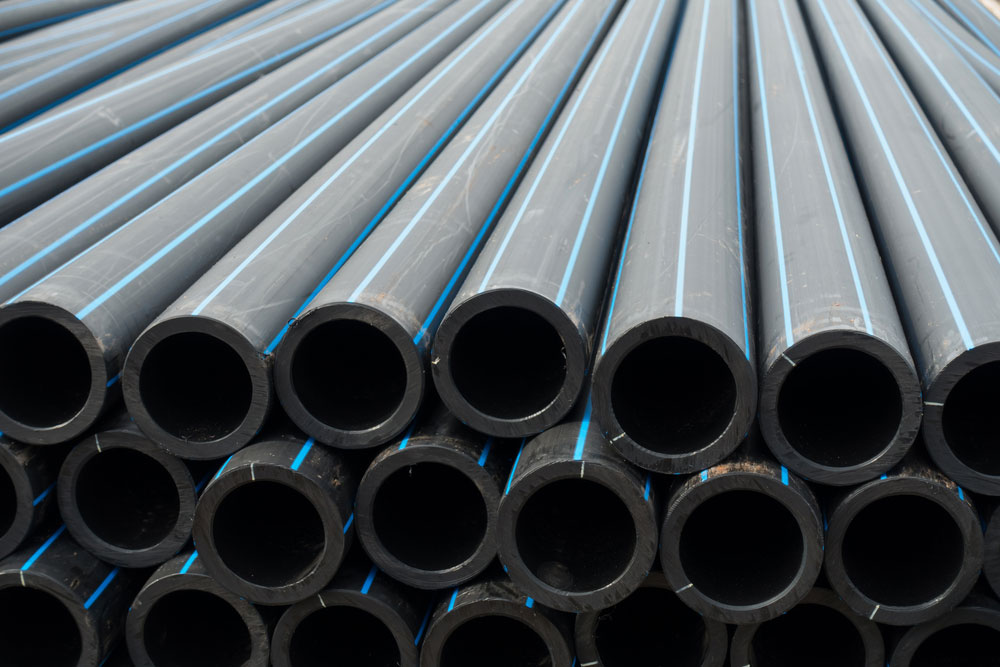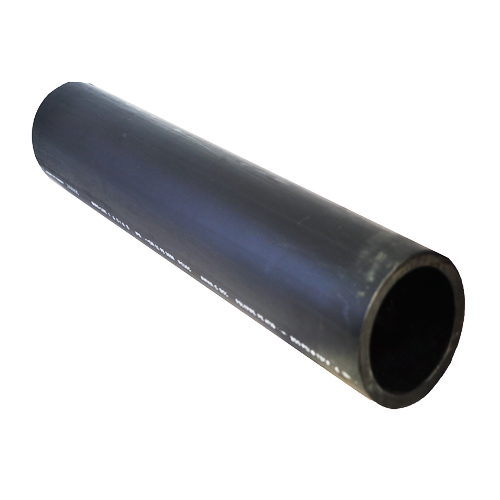How to Connect hdpe pipe fittings Midland TX for Reduced Maintenance
Wiki Article
Discover the Production Process Behind High-Quality HDPE Pipeline and Its Applications
The manufacturing process of high-grade HDPE pipes is detailed and systematic. It begins with the option of raw products that boost efficiency. Following this, ethylene goes through polymerization to create material, which is after that formed through extrusion. Quality control is extremely important, making sure that the final item satisfies rigid criteria. However, the journey of HDPE pipelines does not finish with production. Their applications across various markets expose a more comprehensive relevance worth analyzing.Recognizing HDPE: Characteristics and Advantages

High-density polyethylene (HDPE) is a flexible polycarbonate known for its longevity and resistance to different ecological factors. This material shows exceptional tensile toughness, making it suitable for requiring applications. Its low-density structure adds to a lightweight product, assisting in ease of taking care of and setup. HDPE also showcases impressive resistance to chemicals, which lessens destruction when subjected to extreme substances.
The product's low moisture absorption additionally enhances its longevity, making it optimal for usage in pipelines and storage tanks. Additionally, HDPE is immune to ultraviolet (UV) radiation, guaranteeing that products keep their honesty also when subjected to sunshine. Its adaptability allows for the development of detailed shapes without jeopardizing strength. The eco-friendly nature of HDPE, often originated from recycled materials, adds to its appeal, promoting lasting methods in production. Overall, these residential or commercial properties and advantages make HDPE a recommended option for various commercial and customer applications.
Raw Product Choice for HDPE Production
The selection of resources for HDPE production is vital to verify the end product meets the desired specs and quality requirements. High-density polyethylene (HDPE) is mostly created from polymerized ethylene, stemmed from fossil gas such as gas or petroleum. The quality of these feedstocks considerably affects the mechanical and thermal homes of the last HDPE.Additives additionally play a substantial function in enhancing HDPE's performance, consisting of antioxidants, UV stabilizers, and colorants, which boost longevity and resistance to ecological variables. The choice process need to take into consideration not just the chemical composition of the raw products however also their handling features to ensure efficient manufacturing.
Furthermore, the sourcing of basic materials must focus on sustainability and compliance with ecological regulations, as accountable methods are imperative in today's market. Eventually, mindful raw material option lays the foundation for creating premium HDPE pipelines appropriate for diverse applications.
The Extrusion Process: Forming HDPE Pipeline
The extrusion process plays an important duty fit HDPE pipelines, starting with careful material prep work strategies that assure suitable circulation and consistency. Similarly important is the style of the die, which straight affects the last dimensions and surface area high quality of the pipe. Together, these aspects add considerably to the efficiency and high quality of HDPE pipeline manufacturing.Product Preparation Strategies
Efficient manufacturing of HDPE pipelines begins with meticulous material prep work methods, especially the extrusion process. During this stage, high-density polyethylene resin is very first dried out to eliminate moisture, making sure excellent flow attributes. The resin is after that fed right into the extruder, where it undertakes heating and melting, changing right into a thick state. This heating process is meticulously regulated to keep the product's integrity and performance. The liquified HDPE is compelled via a die, shaping it right into a continual pipeline kind. Correct temperature monitoring during extrusion is necessary, as it straight influences the material's properties and the end product quality. When shaped, the HDPE pipe is cooled and cut to defined sizes, ready for subsequent handling and applications.Die Style Importance
Precision in die layout plays a vital function in the extrusion process of HDPE pipelines. The die acts as the final shaping tool, directly influencing the pipeline's measurements, wall surface thickness, and surface area coating. A properly designed die guarantees uniform product circulation, minimizing problems such as irregularities and vulnerable points. The geometry of the die have to be maximized to fit the details buildings of HDPE, including its viscosity and thermal behavior during extrusion. Additionally, the cooling rate of the product as it goes through the die can noticeably impact the pipeline's architectural integrity. As a result, buying innovative die innovation is vital for makers aiming to generate high-quality HDPE pipelines that fulfill industry criteria and consumer expectations.Quality Assurance Procedures in HDPE Production
Although various factors affect the high quality of HDPE pipeline manufacturing, efficient quality assurance procedures are crucial to assure consistency and dependability in the last item. Secret quality control methods consist of extensive material inspection, verifying that the raw polyethylene meets recognized standards for purity and density. During the extrusion process, specifications such as temperature level, stress, and cooling time are very closely kept an eye on to maintain dimensional precision and architectural honestyOn top of that, post-production screening is crucial; makers frequently carry out hydrostatic examinations to assess the pipe's stamina and resistance to pressure. Aesthetic inspections for surface area issues better boost quality control. Certification from relevant criteria organizations, like ASTM or ISO, provides an added layer of credibility. By implementing these thorough quality assurance actions, makers can reduce problems, improve efficiency, and make certain that the HDPE pipes satisfy the specific needs of various applications, inevitably causing customer complete satisfaction and count on the item.
Applications of HDPE Pipe Across Industries
HDPE pipes are used throughout numerous fields because of their sturdiness and versatility. In water distribution systems, they assure effective distribution, while in wastewater management, they provide trustworthy services for waste transportation. In addition, agricultural watering networks benefit from HDPE's resistance to rust and flexibility, making it an ideal option for modern farming techniques._-_Post_di_Facebook_-_Dimensioni_personalizzate_(1)_60cafdf20856f.png)
Water Circulation Solutions
A substantial number of industries count on high-density polyethylene (HDPE) pipelines for effective water distribution systems. Recognized for their toughness and resistance to corrosion, HDPE pipelines are commonly utilized in community water supply networks, farming irrigation, and industrial applications. Their light-weight nature helps with simple handling and setup, minimizing labor prices and time. In addition, HDPE pipes can suit different stress degrees, making them ideal for both low and high-pressure systems. American Plastics HDPE Pipe for Oilfield. The versatility of the material permits smooth assimilation into existing framework, decreasing the demand for extensive excavation. Moreover, HDPE's resistance to chemical seeping assurances that the water provided stays safe and clean, making it an excellent choice for maintaining the quality of potable water throughout numerous marketsWastewater Monitoring Solutions
Reliable water circulation systems also lead the way for ingenious wastewater management options, where high-density polyethylene (HDPE) pipelines play a substantial duty. Popular for their resilience and resistance to rust, HDPE pipes are suitable for delivering wastewater in different settings. Their versatility enables very easy setup in complicated atmospheres, lessening the requirement for extensive excavation. In addition, HDPE's smooth interior surface lowers friction, boosting circulation rates and effectiveness. These pipes are likewise resistant to chemical leaching, making sure that impurities do not endanger the surrounding setting. Industries, districts, and treatment centers progressively count on HDPE pipes for their dependability and durability, making them a recommended choice for contemporary wastewater management systems. This versatility highlights the important importance of HDPE pipelines across countless applications.Agricultural Watering Networks
Agricultural irrigation networks benefit considerably from the use of high-density polyethylene (HDPE) pipelines, which give reliable and trusted water distribution to crops. HDPE pipes are light-weight, making them simple to carry and set up, while their flexibility permits different arrangements in diverse surfaces. These pipes demonstrate excellent resistance to deterioration, chemicals, and UV radiation, making sure durability in rough farming environments. Additionally, their smooth indoor surface area decreases rubbing loss, enhancing water flow and reducing energy prices related to pumping. The long life of HDPE pipes, commonly exceeding half a century, contributes to decrease maintenance and substitute expenditures. Farmers significantly rely on HDPE pipes to boost irrigation effectiveness and promote lasting farming practices, eventually leading to boosted plant yields and resource preservation.
Future Trends in HDPE Pipeline Technology
As the demand for lasting and efficient facilities expands, developments in HDPE pipeline technology are positioned to transform different sectors. Emerging trends consist of the combination of smart technologies, such as sensors and IoT capacities, which assist in real-time surveillance of pipe conditions, minimizing upkeep expenses and preventing leakages. In addition, the development of sophisticated manufacturing methods, such as 3D printing, is making it possible for the manufacturing of complex, tailored pipe styles that deal with particular project requirements.The emphasis on recycling and round economic situation techniques is driving the technology of HDPE pipelines made from recycled materials, boosting sustainability. Improved jointing techniques, such as electro-fusion and mechanical fittings, are additionally improving setup performance and dependability. The expanding focus on environmental policies is pushing producers to adopt greener production processes, ensuring that HDPE pipes not only fulfill sector criteria yet additionally promote an even more sustainable future for infrastructure advancement.
Regularly Asked Questions
Exactly How Does HDPE Contrast to Other Plastic Products?
HDPE outmatches numerous various other plastic products pertaining to durability, chemical resistance, and adaptability. Its low thickness and high tensile strength make it suitable for different applications, commonly exceeding alternatives in both efficiency and durability.What Are the Environmental Influences of HDPE Production?
The environmental effects of HDPE production include greenhouse gas exhausts, energy usage, and possible pollution from producing procedures. In addition, incorrect disposal can bring about soil and water contamination, elevating concerns regarding lasting ecological impacts.Can HDPE Piping Be Reused?
Yes, HDPE pipes can be recycled. Lots of centers accept utilized HDPE for handling, changing it right into brand-new products. This recycling contributes to sustainability efforts, reducing plastic waste while conserving resources and energy in the production cycle.What Is the Lifespan of HDPE Water Lines?

Exactly How Do Temperature Level Variations Affect HDPE Pipe Efficiency?
Temperature variants significantly influence HDPE pipeline performance, affecting versatility and stamina. High temperature levels can bring about softening, while reduced temperature levels might cause brittleness, ultimately affecting the pipe's sturdiness and suitability for various applications in varied atmospheres.Report this wiki page